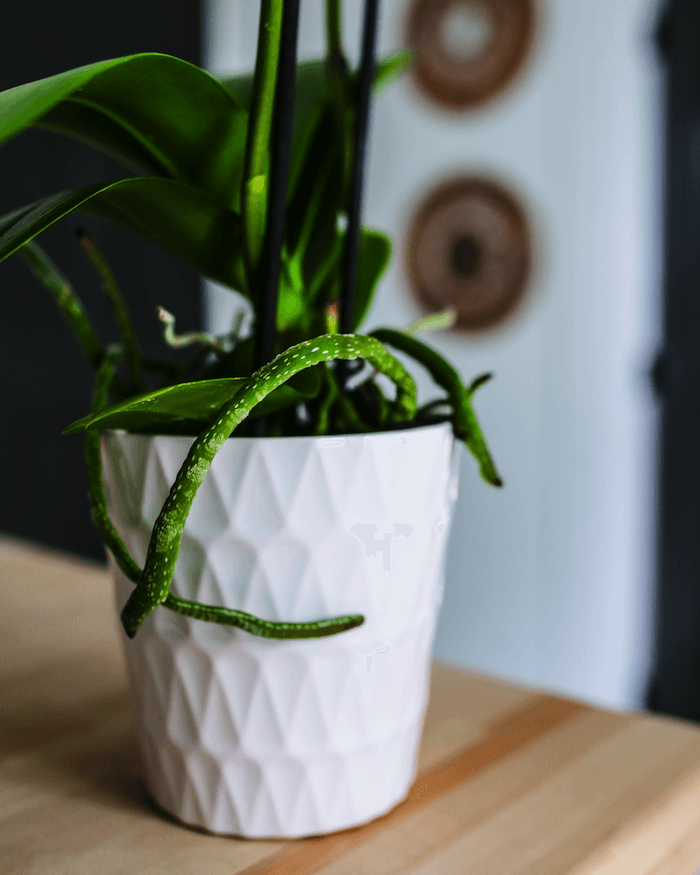
Orchids are stunning and beautiful, especially when blooming. Sometimes your roots may extend above the top of the plant.
If some of your orchid’s roots are beginning to grow above the surface of the growing medium, your orchid has air roots. Some people refer to them as aerial roots, and the sight of these above-soil roots may make you worry that your orchid has outgrown its pot or that you've neglected a basic orchid plant care practice.
As a general rule, Phalaenopsis orchids only need to be repotted every year or two, so before you rush off to repot your orchid, let’s take a look at how orchid air roots develop and grow and what you can do to keep your orchid healthy.
Air roots are normal in Phalaenopsis and other epiphyte orchids. Epiphytes grow on other plants, such as trees in a tropical rainforest. Unlike terrestrial orchids that root in the earth, epiphyte orchids grow above the ground, using their roots to attach themselves to tree branches.
While our plants are in individual or duo pots, in nature, they would climb trees – and they can’t escape that instinct, even in your home! But, since there isn’t something to climb, those roots can just grow outwardly instead.
In their native tropic environment, Phalaenopsis orchids cling to tree branches high above the jungle floor as they attempt to reach the light filtering through the leafy canopy. The indirect sunlight is more plentiful above ground.
Unlike other plants that attach themselves to trees, Phalaenopsis orchids are not parasitic. Instead, they use their roots to absorb nutrients from the air, absorbing moisture and obtaining carbon dioxide they need to thrive!
We often talk about how roots are the key to understanding your orchid. This is true, but we are typically referring to the buried ones!
Aerial roots and buried roots do need to be treated differently, because they absorb their nutrients from different places. Your buried roots should be bright green and moist, that means they have enough moisture. They receive much of their nutrients from water and the soil or bark surrounding them. Aerial roots receive what they need from the air and because of that, they may appear ‘drier’ or ‘wilted’ than buried roots, but that doesn’t mean they are!
When examining the roots of your Phalaenopsis orchid, you will notice that they're thick and coated with a spongy material. Called velamen, this material is like a thin ‘skin’ that helps the plant absorb nutrients, such as water and nitrogen, while also keeping it attached to tree bark.
When Phalaenopsis orchid roots are healthy, velamen is silvery-white, round and plump and the air roots are firm and white. You should definitely not remove healthy air roots. There’s a good chance you can harm your plant. You could even introduce a dangerous virus.
In homes with low humidity, air roots can turn yellow and shrivel. If this occurs, wait until your orchid stops blooming, and then use a sterile knife or scissors to cut away the shriveled roots.
There’s also the chance your plant is outgrowing your pot. If you need to repot your plant, make sure you only do this when your plant isn’t blooming!

Copyright Just Add Ice® Orchids 2023